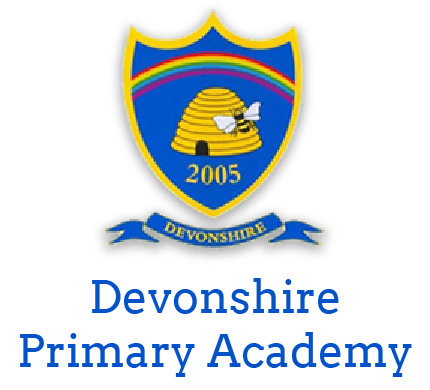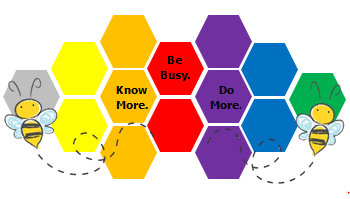Our Curriculum
Vision
At Devonshire Primary Academy, we want our children to be the ‘best that they can be’. We want them to have not only the knowledge they need to succeed at high school and beyond, but also to love learning, to be intrinsically motivated to achieve and believe that with buckets full of hard work, determination and resilience, they can do anything they can put their minds to. We strive to teach them essential life skills and instil our Devonshire values at every opportunity to ensure that every child that leaves our school as well- rounded and respectful individuals.
We whole- heartedly believe that:
‘Curriculum is absolutely critical. The substance of what we plan for our children to learn will form the resources they have to draw upon when approaching problems. Knowledge in students’ long- term memory will be their toolbox…’ (Rosalind Walker (2019) ‘Curriculum and Cognitive Science’)
As such, we have built a curriculum for our children that is ambitious; a curriculum that promotes our values and one that is designed to provide the knowledge and cultural capital that they need to succeed in life.
How is our curriculum designed?
Progression Documents
As part of The Sea View Trust, we have alignment through our Curriculum Skeleton, a Trust Milestone Framework, which is a progression document that offers the widest possible breadth and balance. This has been expanded upon by a cross-Trust working party of subject leaders and is a development of the curriculum project which has taken place here, at Devonshire Primary Academy.
The Curriculum Skeleton incorporates National Curriculum end of Key Stage age-related expectations and considers next steps (for example Y6 supports transition to KS3). This is not a scheme, nor is it a curriculum. It is essentially the National Curriculum… but with a Sea View twist! Within it, we ensure that our children are provided with knowledge above and beyond that of the National Curriculum, which we hope will equip them with the Cultural Capital they require to be successful throughout their primary journey and beyond.
Teachers of all year groups are aware that they are responsible for their ‘leg’ of the child’s educational journey. The skeleton will ensure that there will be no long-term curriculum narrowing and milestones will be sequentially delivered.
Subject Schemas
Our curriculum is designed to support children in developing subject specific- schema within their long-term memories. A schema is a way of organising knowledge in a meaningful way; it allows you to make connections between individual pieces of information; we need this to be able to reason, problem- solve and be creative! A schema can only be built effectively if knowledge is taught sequentially.
Knowledge, according to Hirsch, is ‘mental velcro’- new knowledge sticks to prior knowledge – without laying the foundations and building on them sequentially, gaps in knowledge are created and children are unable develop a secure and robust schema.
A schema enables us to think more quickly. Children will pay more attention to something if they can link it to a schema. Schemas can help children make sense of the world around them by classifying and organising new information to existing schemas, which is why threshold concepts play such a vital role in our curriculum.
Threshold Concepts
Our curriculum contains threshold concepts and knowledge organisers. Threshold concepts are the ‘big ideas’ within a subject that come up repeatedly; they prove useful in helping our children to assimilate new information into a growing schema. It allows them to build subject specific (rather than context specific) schema, for example: ‘Investigate Places’, which provides opportunities to link contexts together, instead of building a schema around a stand-alone context, such as ‘The United Kingdom’.
Knowledge organisers break the threshold concepts down into smaller chunks, detailing the granular knowledge the children need to learn in order to sequentially develop their schema.
Teachers activate prior learning when introducing a new topic by reminding children of the prior knowledge which has been previously taught within the threshold concept that they are covering. All of our teachers have been trained in revisiting concepts regularly to ensure that the children’s knowledge has been cemented in to their long-tern memory.
Long Term and Short Term Planning
It takes time for pupils to demonstrate mastery of threshold concepts; we believe that children need to gradually develop their semantic and procedural fluency in the wider curriculum through three cognitive domains: basic, advancing and deep.
As part of the progression model, within our school curriculum, a different pedagogical style is used in each of the cognitive domains of basic, advancing and deep. This is based on the research of Sweller, Kirschner and Rosenshine, who argue for direct instruction in the basic domain and problem-based discovery in the deep domain.
Each subject’s curriculum planning documents help pupils meet the milestones by providing:
- clearly defined topics to study which ensure curriculum breadth (long term planning);
- the knowledge needed to build a schema (knowledge organisers);
- the vocabulary needed to articulate an understanding of the subject (Vocabulary Spine); and
- an outline of appropriately pitched (cognitive domain) tasks to carry out to show proof of progress (short term planning).
Curriculum Milestones
For each of the threshold concepts, in each subject, 6 milestones have been outlined to ensure progression through each phase of their educational journey in Key Stage 1 and Key Stage 2. EYFS (Preschool and Reception) have a separate curriculum which meets The Statutory Framework for the Early Years Foundation Stage.
How is our curriculum delivered?
We know that learning is most effective with spaced repetition, which is why, throughout the year, children study numerous topics for each subject, allowing the ‘Big Ideas’ (Threshold Concepts) to be revisited over and over again. We ensure previously taught knowledge is retrieved regularly, which increases both storage and retrieval strength. Continuous provision, in the form of daily routines, replaces the teaching of some aspects of the curriculum and, in other cases, provides retrieval practice for previously taught learning content.
How do we support teaching staff to deliver the curriculum?
Each Subject Lead is an experienced practitioner and, with the support of the Hive Leads and Curriculum Lead, is responsible for devising subject schemas, Subject Knowledge Maps and long and short term plans for their subject. CPD is provided through twilights, staff meetings, INSET days and external courses to ensure that our Subject Leads are fully equipped to support class teachers to use the documents created to adapt their planning to suit the needs of the classes. As a result, the curriculum can be successfully modified, designed or developed to be ambitious and meet the needs of pupils with SEND. The teaching of subjects is monitored by Subject Leads, Phase and Hive Leads as well as SLT. Feedback from lesson observations, learning walks and book monitoring etc., alongside pupil voice feedback, informs future planning refinements and developments – under the guidance of the Curriculum Lead. This ensures coherence and cohesion.
How does the curriculum reflect the culture and climate of our school?
We have designed a bespoke curriculum with our children in mind. To do this we have combined our overarching curriculum aims with the school vision to enable Subject Leads to tailor their vision for their subjects and plan accordingly.
We know that it is important to prepare children for the workplace.
Further Information
If you require additional information relating to the curriculum, please contact the Assistant Headteacher and Curriculum Lead, Miss C. Preston, on 01253 478271.


